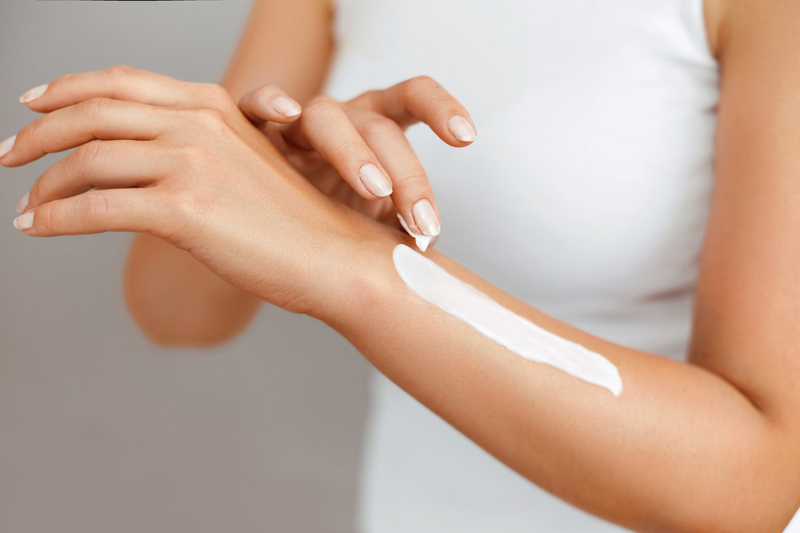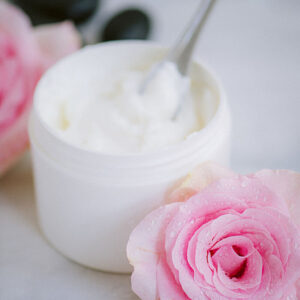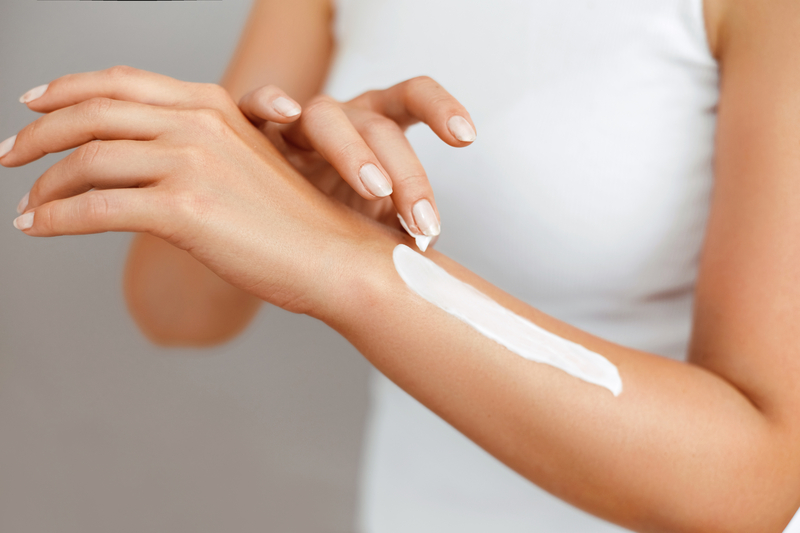The shocking impact of microplastics in our everyday lives

Phthalates, a family of chemical compounds, have been used for nearly a century to make PVC flexible and bendable, present in piping, tubing, packaging, wiring, and numerous consumer goods. According to National Center for biotechnology (2020), Phthalates are a known endocrine system disruptor and pregnant women and babies within the prenatal period are particularly susceptible to endocrine disorders due to exposure. So, where can they be found?? Pretty much everywhere as Plastic is such a widely used resource.
Phthalates, those elusive chemicals you can’t see, smell, or taste, have permeated hundreds of everyday products, from cosmetics to food packaging. Ami Zota, an associate professor of environmental and occupational health at George Washington University, reveals that almost all Americans carry phthalate byproducts in their urine.
What Products Are Phthalates Found In?
Some common products that have Phthalates in them
These sneaky substances can be found in an array of items, including:
- One of the biggest sources: Cosmetics and personal care products: perfume, nail polish, hair spray, soap, shampoo, and skin moisturizers
- Medical tubing and fluid bags
- Wood finishes
- Detergents
- Adhesives
- Plastic plumbing pipes
- Lubricants
- Solvents
- Insecticides
- Building materials
- Vinyl flooring
- Shower curtains
What Foods Are High in Phthalates?
Certain foods are linked to higher phthalate levels, such as:
- Restaurant, cafeteria, and fast foods
- High-fat dairy
- Fatty meats and poultry
- Cooking oils
How Do Phthalates Get Into My Body?
Phthalates surreptitiously infiltrate your system through:
- Consuming items served or packaged in phthalate-laden plastic
- Consuming dairy and meat products from animals exposed to phthalates
- Using cosmetics, shampoo, skin moisturizers, and other personal care products
- Contact with dust in rooms containing phthalate-infused carpeting, upholstery, wall coverings, or wood finishes (men who work in construction, home improvement and repair, beware as there are phthalates everywhere!)
*Certain professions and medical conditions can heighten exposure, such as working in painting, printing, or plastics processing, or having conditions like kidney disease or hemophilia.
4. Possible Health Effects of Phthalates: Unraveling the Research & Concerns
Research on phthalates and human health is still in progress, with more studies conducted on animals than on people. One study links high phthalate levels to early death in older individuals, particularly related to heart disease.
However, it’s crucial to note that while this study suggests a link between phthalates and premature death, it does not establish causation. More research is needed to validate these findings and understand the mechanisms behind how these chemicals might contribute to early mortality.
FDA Status and Safety:
The FDA recommends guidance on potentially risky phthalates, such as DBP and DEHP. They currently allow about 9 different phthalates in food contact applications. Currently, there is no clear stance on phthalates in food, food packaging, and food handling equipment, which to me really is a bit ridiculous considering exposure has been proven to be damaging to humans, animals and our planet.
High concentrations of Phthalates are found in soft drinks, mineral waters, wine, oils, and other food products.
3. Exposure and Detection: Unveiling the Hidden Risks
Most people are exposed to phthalates through daily products and even through air particles. Did you know that exposure can be determined by measuring levels in urine, blood, and breast milk.
Are Phthalates Safe?
If plastic is being found in both human and fish’s blood, urine and breast milk, do you really think it is safe?
The safety of phthalates isn’t a straightforward answer as they constitute a diverse chemical family, each behaving differently. Some, like BBP, DBP, and DEHP, are permanently banned from certain children’s products.
Research indicates that exposure to replacement phthalates like DINP, DnOP, and DIDP is on the rise, while others like DBP, BBP, and DEHP have seen declines in recent years.
How Do Phthalates Affect Humans?
Phthalates impact different groups in various ways:
- Unborn babies and children are among the most vulnerable, with potential harm to males.
- Pubescent children are also at risk, as times of bodily changes increase vulnerability.
- Adult women may experience more side effects than men, possibly due to higher use of personal care products.
Babies and Children:
Soft plastic teethers and baby toys contain phthalates, posing hazards to a baby’s health.
CDC (2021) notes that phthalate particles are present in dust, increasing exposure risk for babies who crawl and touch various surfaces. Just think about our furry friends and the amount of time that they spend on the floor too.
Studies have linked phthalates to various health conditions, affecting the liver, kidneys, lungs, endocrine system, and reproductive system.
Specific Health Concerns:
- Reduced testosterone levels and low sperm counts.
- Adverse effects on thyroid hormones.
- Association with certain cancers, including thyroid and breast cancers.
- Links to type 2 diabetes, insulin resistance, allergies, and asthma.
- Higher risks for females of childbearing age and babies.
5. DIY Alternatives and Tips for Phthalate-Free Living
Now that we’ve exposed the risks, let’s explore alternatives and tips for a phthalate-free lifestyle.
Identifying Phthalates:
Recognize them by their chemical structure acronyms: DOP, DBP, DMP, DEP, DiBP, DBP, BzBP, DEHP.
Also, check plastic products for recycling codes: Avoid #3, #6, or #7 whenever possible.
Reducing Exposure:
- Choose natural personal care items.
- Avoid PVC vinyl flooring, shower curtains, and plastic toys.
- Opt for essential oils over air fresheners with phthalates.
- Use microwave-safe and phthalate-free containers.
- Prepare fresh foods at home to reduce exposure to fast food containing phthalates.
And my personal favorite for its safety, affordability and low waste
DYI Homemade essentials
*Whether you are a beginner or advanced in the world of DYI Homemade Essentials such as cleaners, personal care and beauty, there is no better time than the present to start on your wellness journey and we are here to guide you!
Five Compelling Reasons to Craft Your Own Personal Care Items
Embracing DIY recipes over the years have become a passion of mine, particularly those that are effortlessly achievable. The flexibility of investing anywhere from 15 minutes to an hour allows for a personalized approach based on the number of items being created simultaneously. Here are the primary reasons why I’ve come to appreciate the creation of DIY personal care products:
- Safety Assurance: Gain confidence by personally knowing and trusting every ingredient used in your products. * Phthalate, Paraben, Triclosan, Formaldehyde free Products
- Simplicity in Creation: No specialized equipment is necessary; the process mainly involves straightforward mixing techniques.
- Economic Benefits: While the initial cost of purchasing ingredients might accumulate, the long-term savings are substantial.
- Extended Product Lifespan: DIY recipes often yield generous quantities of products, and a small amount goes a long way, ensuring a lasting supply.
- Tailored to Your Preferences: Exercise control over factors such as fragrance selection or going fragrance-free, choosing packaging styles, substituting ingredients for allergies, and adjusting the SPF level for sunscreens according to personal needs.
FREE DIY HOMEMADE DEODORANT RECIPE

DIY Deodorant Recipe
Ingredients:
1 bowl or 8 oz mason jar to melt coconut oil in
1 2 4oz mason jar
1 tablespoon for measuring
1 utensil for stirring
2 tablespoons arrowroot powder (gluten-free and suitable for sensitive skin)
2 tablespoons baking soda
3 tablespoons coconut oil
Optional: 5-8 drops of essential oil
Instructions:
In a bowl or 8 oz. mason jar, combine arrowroot powder, and baking soda.
Add 3 tablespoons of coconut oil to the jar.
Optionally, incorporate 5-8 drops of your preferred essential oil for fragrance. I like to use oils that act as an anti-bacterial or viral or help with circulation.
Use a utensil to thoroughly mix the ingredients until a consistent texture is achieved.
Apply the deodorant as needed with a wooden popsicle stick or fingers and store any remaining product in smaller mason jars.
Additional Note: If you have specific skin sensitivities or gluten concerns, rest assured that arrowroot powder is gluten-free and known for its gentle properties, making it suitable for those with sensitive skin.
6. Conclusion: Crafting a Safer and Sustainable Lifestyle
In a world filled with potential health hazards, being an educated consumer empowers us to make choices aligned with our well-being and values. Whether avoiding SLS or steering clear of phthalates, the journey to safer, affordable, and eco-friendly living starts with the choices we make daily.
Remember, the best way to protect your family from phthalates is to read labels on products and look for three- or four-letter chemical structure acronyms for phthalates, such as DOP, DBP, and DMP.
The Simple Things Lady
Sources:
- American Academy of Pediatrics. (2018). Food Additives and Child Health. Retrieved from: Food Additives and Child Health | Pediatrics | American Academy of Pediatrics (aap.org)
- U.S. Food and Drug Administration (FDA). (2021). Phthalates. Retrieved from: Food Additives and Child Health | Pediatrics | American Academy of Pediatrics (aap.org)
- Center for Disease Control and Prevention (CDC). (2021). Phthalates. Retrieved from: Phthalates Factsheet | National Biomonitoring Program | CDC Retrieved from: Phthalates and Their Impacts on Human Health – PMC (nih.gov)
- National Institute of Environmental Health Sciences. (2021). Phthalates. Retrieved From: Phthalates and Their Impacts on Human Health – PMC (nih.gov)
- Environmental Working Group. (2021). EWG’s Skin Deep® Database. Retrieved from: EWG Skin Deep® Cosmetics Database
- Penn State Extension. (2019). Phthalates in Plastics. Retrieved from: Human health impacts of exposure to phthalate plasticizers: An overview of reviews – ScienceDirect
- National Library of Medicine (2020) The endocrine Disruption of Prenatal Phthalate exposure in Mother and Offspring. Retrieved from: The Endocrine Disruption of Prenatal Phthalate Exposure in Mother and Offspring – PubMed (nih.gov)
- Livestrong (2021) Dangers of Sodium Lauryl Sulfate Retrieved from: Dangers of Sodium Lauryl Sulfate | livestrong
- Discover the secrets to healthy living on a budget with DYI ! (simplethings.blog)

